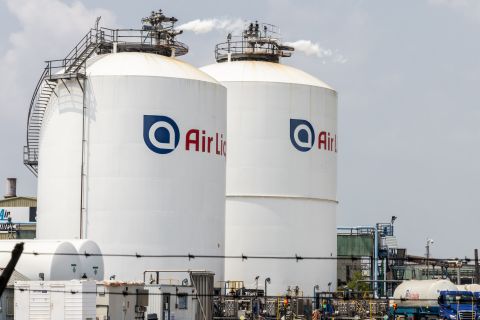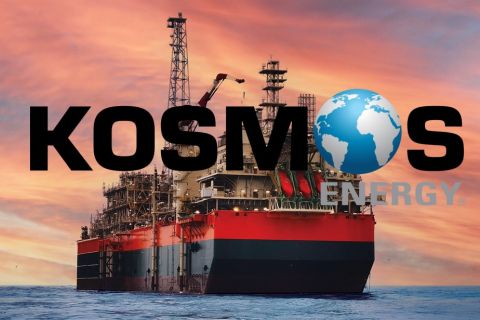
(Source: Syda Productions/Shutterstock.com)
[Editor's note: This article originally appeared in the November issue of E&P Plus. Subscribe to the digital publication here.]
The world’s next energy transformation is underway, and transitioning to a lower carbon future will require ingenuity from all sectors of the energy industry. While renewable energy will continue to move us toward these goals, much of the innovation required will come from the oil and gas (O&G) industry, with its history of scaling technological solutions to meet the world’s energy demand.
The transition is not about replacing one form of energy with another; it is about the entire energy ecosystem collaborating to power the world in the cleanest, most efficient and affordable ways possible. This is a transition all Americans can get behind, from oilfield workers in West Texas to solar installation technicians in California.
The O&G industry comprises engineers, data scientists, geologists, parents, grandparents, men, women and people of all races and backgrounds who care about the environment and want the best for future generations. Excluding this expertise wastes a major driver of energy industry solutions. We can provide the energy the world needs now, while making it cleaner and safer by using technology to reduce emissions and improve efficiency.
As we transition to lower carbon energy, we must be smart and realistic. According to the International Energy Agency, a billion people lack access to electricity, and global energy needs will increase 25% by 2040. Scale and expertise matter, and hydrocarbon products that provide access to affordable and reliable electricity must remain part of the fuel mix for the foreseeable future.
Together, we have reduced emissions while making energy production and consumption cleaner and more efficient than ever. The shift to natural gas for electricity generation cut CO2 emissions by 2.8 billion metric tons from 2005 to 2018, according to the Energy Information Administration. From 2005 to 2017, U.S. electricity generation increased 4% while related CO2 emissions fell 27%. Approximately 61% of that reduction was from switching to natural gas.
Further success toward a lower carbon future will require major investments of time, money and ingenuity. Although the industry is struggling because of COVID-19, we’re developing next-generation technologies alongside renewable energy firms to deliver a decarbonized future.
National Oilwell Varco is developing equipment for one of the world’s largest offshore wind turbine installation vessels. Oceaneering is using O&G ROV technology to monitor offshore wind facilities. Baker Hughes and Schlumberger are working to achieve net zero carbon. Halliburton recently created a renewable energy incubator.
Danos is using virtual reality to bring the offshore to its workers. Along with being a driver of U.S. offshore wind, Equinor is outfitting O&G platforms with wind turbines and reducing greenhouse-gas emissions associated with the electrification of platforms.
Onshore O&G producers have implemented new technologies in aerial, satellite and ground-based monitoring of methane emissions from production facilities. One example is Project Astra, a collaborative effort in the Permian that identifies methane leaks as they happen. Onshore companies are deploying mobile sensors at their production facilities to feed emissions data into a leak-detection network.
Through technology and innovation, the O&G sector has continually met challenges, increased efficiency and reduced emissions. Excluding the O&G workforce from collaboration delays the goal of a decarbonized energy supply. We know how to scale projects and deliver technology that reduces energy poverty and provides the power people need. We are partners on the path to developing technologies that will transition our energy economy to a cleaner future.
About the authors:

President, Petroleum Equipment & Services Association

CEO, American Exploration and Production Council

President, National Ocean Industries Association
Recommended Reading
Air Products Sees $15B Hydrogen, Energy Transition Project Backlog
2024-02-07 - Pennsylvania-headquartered Air Products has eight hydrogen projects underway and is targeting an IRR of more than 10%.
Air Liquide Eyes More Investments as Backlog Grows to $4.8B
2024-02-22 - Air Liquide reported a net profit of €3.08 billion ($US3.33 billion) for 2023, up more than 11% compared to 2022.
Some Payne, But Mostly Gain for H&P in Q4 2023
2024-01-31 - Helmerich & Payne’s revenue grew internationally and in North America but declined in the Gulf of Mexico compared to the previous quarter.
Uinta Basin: 50% More Oil for Twice the Proppant
2024-03-06 - The higher-intensity completions are costing an average of 35% fewer dollars spent per barrel of oil equivalent of output, Crescent Energy told investors and analysts on March 5.
In Shooting for the Stars, Kosmos’ Production Soars
2024-02-28 - Kosmos Energy’s fourth quarter continued the operational success seen in its third quarter earnings 2023 report.





